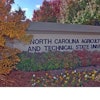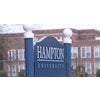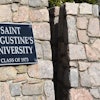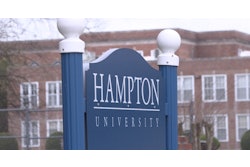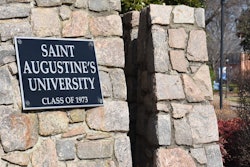HBCUs Get Savvy About Fund Raising
By Cheryl D. Fields
Today, anyone interested in donating to the United Negro College Fund (UNCF) can do so online. An agreement between the National Association for Equal Opportunity in Higher Education (NAFEO) and Gateway computer company gives HBCUs a new way to save on technology purchases. Howard University recently scored a major coup by wooing development veteran Virgil E. Ecton away from UNCF, after 31 years, to head the university’s institutional advancement team. And, last year, Hampton University became the first historically Black college to break the $200 million mark in a capital campaign.
Everywhere, there is evidence that HBCUs and their supportive organizations are becoming more savvy and aggressive about fund raising and development. The July 5, 2001, edition of Black Issues focused on the capital campaign activities of HBCUs. But capital campaigns are only one way that these schools are working to improve their institutional stability.
More and more, HBCUs are adopting advancement models to enable them to craft a more cohesive and lucrative approach to development. The array of opportunities that HBCUs are exploring now includes: non-alumni donor development, online contributions, alumni giving, endowment development, challenge grants, faculty and staff giving, student giving, estate planned-giving, major gifts, and foundation and corporate gifts. Properly coordinated with public relations, communications, marketing, direct mail and government relations, these activities can yield significant returns. It is certainly not your run-of-the-mill, HBCU fund raising anymore.
“Advancement is different because it attempts to move the institution forward instead of just raising money,” says Alice Green Burnette, founder and principal of Advancement Solutions, a development consulting firm in Palm Coast, Fla.
Philanthropists and development professionals welcome these trends and predict that those institutions that fail to get their development houses in order won’t survive.
“Corporations are interested in getting the biggest bang for our buck,” says Noel Hankin, vice president of multicultural marketing at Schieffelin & Somerset and a member of the Thurgood Marshall Scholarship Fund board. “We want to be sure the contributions we make are being well spent.”
Ida Simon, vice president and chief development officer for the Thurgood Marshall Scholarship Fund, says “schools that don’t work it out over the next five or six years will become less competitive because they won’t have the infrastructure and things that draw students or faculty.”
Encouraging Alumni Giving
Delaware State University began moving toward an advancement model of development in 1999. Prior to that, the Dover, Del., campus with an enrollment of roughly 3,100, had experienced success with capital campaigns, but thought it could do even better. Billie J. Hooker, vice president for university advancement since 1999, says the new advancement model emphasizes resource development, relationship building and image building.
“We’re trying to tie all of these together in order to help people feel ownership of this university,” she says. So far, the results are favorable.
The university’s first internal development campaign, targeting staff and faculty, raised $67,000 in 2000 and is on its way to surpassing $80,000 this year, Hooker says. An alumni-targeted campaign attracted the university’s first $100,000 individual alumni gift. Plans are in the works to launch a new capital campaign soon.
Like Delaware State, many HBCUs have only begun to tap the potential of annual giving among alumni, faculty and even students.
“If I’m telling you there are over 2 million (HBCU alumni), what if every one gave $100 per year?” Simon says.
Howard President H. Patrick Swygert, who says he is thrilled about having Ecton lead his advancement team, is looking forward to exploring new opportunities with alumni.
“Estate gifts, if properly cultivated and pursued will have an impact,” he says. Howard also intends to prospect among the emerging crop of African American millionaires who are in their 20s and 30s.
As far as students go, Ecton says college is a good time to begin instilling the notion of responsible giving. “So they can understand that they have an obligation to give back,” he says. “We can do a better job of drilling that message.” He adds that it is a lot easier to start when people are students than it is once they become mature adults who are accustomed to enjoying the benefits of alumni status with no investment.
Amassing the Team
One key to successful development is having a sophisticated advancement apparatus, in which the president plays a leading role.
“At our schools (HBCUs), it is the president who has to set the tone and be the focal point,” says Dr. William B. Harvey, president of Hampton University. To date, Hampton has raised $220 million in its most recent capital campaign (see Black Issues, July 5).
Harvey and his wife, Norma, contributed $1 million of their own money, for teacher education scholarships, to the campaign. Admittedly, few college presidents are in the position to give as generously as Harvey, who apart from his role as president of Hampton also is a successful businessman. Still, even the most committed presidents, must be backed by a skillful and dedicated team.
At Hampton, the team includes: a vice president of development, a vice president and director of the capital campaign, an assistant for the school of business, an assistant for the school of engineering, a general assistant and a prospect researcher, not to mention the attendant support staff. The development efforts also involve the trustees, faculty, staff, alumni and students.
“A lot of people don’t understand that you’ve got to spend money to get money,” Harvey says. “You also have to have people who understand and are committed to the vision.”
Burnette of Advancement Solutions has been studying Black institutional development for more than 37 years. Her research shows that one of the biggest problems HBCUs are having, in terms of the development team effort, is identifying committed trustees.
“The most pressing leadership we lack is at the board level,” she says. “Without that a fund-raiser cannot do very much.”
Cultivating committed trustees, however, can be especially challenging for public HBCUs because in many instances half or even three-quarters of these trustees are appointed by the governors.
“That means someone from the HBCU needs to make the governor aware of the dire need,” says Hankin, who is a founding member of the Thurgood Marshall Scholarship Fund board.
Finding and retaining professional staff with the right combination of commitment and expertise is no easy task either. Nor is it cheap.
HBCU development professionals with 10 years of experience usually command salaries in the $60,000-$150,000 range. Unlike most HBCU presidents, Swygert was in the position to recruit top-shelf development talent. His institution’s commitment to hire Ecton, was no small investment, but they realized that to meet their goals, it was essential to have a seasoned development director at the helm.
Seasoned African American development professionals are especially hard to find because their already scarce numbers are dwindling, says Burnette. Moreover, HBCUs are competing for this talent with mainstream institutions that often have deeper pockets.
“HBCUs frequently have to put all of their eggs in one basket, having one good person who is highly qualified and cutting corners on support staff; or they go for second and third tier individuals.” Ecton says
Still, in today’s competitive market, HBCUs cannot settle for people who aren’t up to speed on the craft. For these reasons HBCUs are nurturing expertise from within.
“We know, from our experience, that training is lacking,” Simon says. “HBCUs are being forced to rethink the way they do business. They’ve got to have people who know what they’re doing or train the people they have.”
The UNCF has offered development training and technical assistance for its members for many years, but this training only recently became available to public HBCUs.
In October, thanks to a $636,000, three-year grant from the Lilly Endowment, the Thurgood Marshall Scholarship Fund will provide development training for member institutions’ presidents, vice presidents, development officers and alumni directors.
In addition to hiring talent, institutions are committing to new technology and management systems that can improve their development capabilities. Those who fail to invest in this infrastructure are inviting trouble.
“Even if it costs 5 (percent) to 10 percent of what you bring in, it is a worthwhile investment,” Ecton says.
Beneath the Surface
Unfortunately, there is a dark side to the exciting development activities of HBCUs. Tension between institutions and organizations appears to be increasing as competition and sophistication mounts.
Evidence of this tension often is just beneath the surface. Most people interviewed for this story were reluctant to go on the record about it. Few, however, denied that the problem exists.
During a Thurgood Marshall Scholarship Fund event held in Washington in July, Dr. Joyce Payne and host Hankin, assured the crowd that the Thurgood Marshall Scholarship Fund, UNCF and NAFEO are complementary institutions and urged guests to support them all.
Last year, the Thurgood Marshall Scholarship Fund, which Payne and Hankin helped launch in 1987 and which today represents a constituency of 45 public HBCUs, surpassed its goal of $4 million by raising $7.5 million. This year, the bar has been set even higher at $10 million.
Even with this progress, the Thurgood Marshall Scholarship Fund is still far behind UNCF, which remains the HBCU development titan, having raised $1.7 billion since it was founded in 1944. The majority of this sum, $1.17 million, has been raised in the past 10 years.
For generations, UNCF was seen as the public champion of African Americans in higher education. “Most people have assumed the UNCF was a one size fits all,” Simon says. “It was assumed that they were raising money for all Black colleges.”
The rising profile and development savvy of groups like the Thurgood Marshall Scholarship Fund and NAFEO, however, mean the UNCF must now share the limelight.
Representing 39 private HBCUs, the UNCF raised $178 million last year. While a modest percentage of what it raises directly benefits the operating budgets of its member institutions, the largest share supports the educational pursuits of Black students who attend UNCF and non-UNCF institutions, including traditionally White schools. In 1999, the fund set a new higher education record by landing a $1 billion, 20-year commitment from the Bill and Melinda Gates Foundation for the Millennium Scholars program.
The high visibility of the UNCF, means that the organization and its president, William H. Gray III, attract a great deal of public praise, scrutiny, and, sometimes, criticism.
Lately, the criticism has focused on the organization’s enforcement of a rule that prohibits its members from accepting development assistance from any other organization. This includes some of the group discounts and other perks that NAFEO has begun to attract for its members. Failure to comply with the solicitation policy rule, which is part of the contract member schools have with UNCF, is grounds for membership revocation.
People outside of the UNCF charge the group with employing unfair tactics to limit competition. Others complain the group’s interpretation of the rule is too harsh. For his part, Gray says it is not management that wrote or even enforces the rule, which was created by the member presidents in 1946 and has been enforced over the years by its solicitation policy committee and the executive board.
Efforts to resolve the fundraising dispute have gone on for more than a year, Gray says. The most recent evidence of this is outlined in a letter that Dr. David L. Beckley, UNCF board chair, sent to his NAFEO counterpart, Dr. Joann R.G. Boyd-Scotland, on April 26, 2001, requesting a meeting of the two groups’ executive committees to discuss the matter. Though an April 12th letter from former NAFEO President Henry Ponder says, “NAFEO is willing to meet anyplace, anytime and with any entity to resolve this matter,” to date, neither Boyd-Scotland, nor anyone else at NAFEO has responded to Beckley’s
letter, Gray says.
“Our position has been, from the beginning, that we would like to see a resolution to this issue, which allows full participation by UNCF members in NAFEO, he says. “And even though our presidents have not had the opportunity to resolve that difference, I am hopeful that at some point the NAFEO presidents will meet with the UNCF presidents and seek a resolution.”
NAFEO, meanwhile, maintains that the “indirect fund raising” it does is not in violation of the agreements it has with its members or UNCF. However, calls by Black Issues to NAFEO interim president, Wilma Roscoe; Boyd-Scotland and Dr. Fred Humphries, a long-time NAFEO board member and prospective new president of the organization, for further comment were unreturned.
Hankin, who declined comment on the UNCF/NAFEO spat, says disputes emerging from the attitude that there are too few resources to go around are unfounded.
“A lot of people feel that there is a limited amount of money and everyone who is asking is a competitor,” he says. “I think there is much more money out there than that.”
Gray and Howard’s Swygert agree.
“There is a lot to go around,” Swygert says, urging the HBCU community to applaud one another’s achievements. “I thought the Gates/UNCF deal was fabulous because it demonstrated that an African American-centered institution had the competence to manage such an enterprise. How would that not help us?”
Harvey, who is not a member of UNCF or the Thurgood Marshall Scholarship Fund, and who has occasionally been asked to mediate disputes between the public and private colleges, says, ultimately, it will take leadership to resolve the current tensions.
“I believe these organizations can coexist,” he says. “We’ve got to be able to find the leadership to get folks to understand that it is in our best interest.”
© Copyright 2005 by DiverseEducation.com


